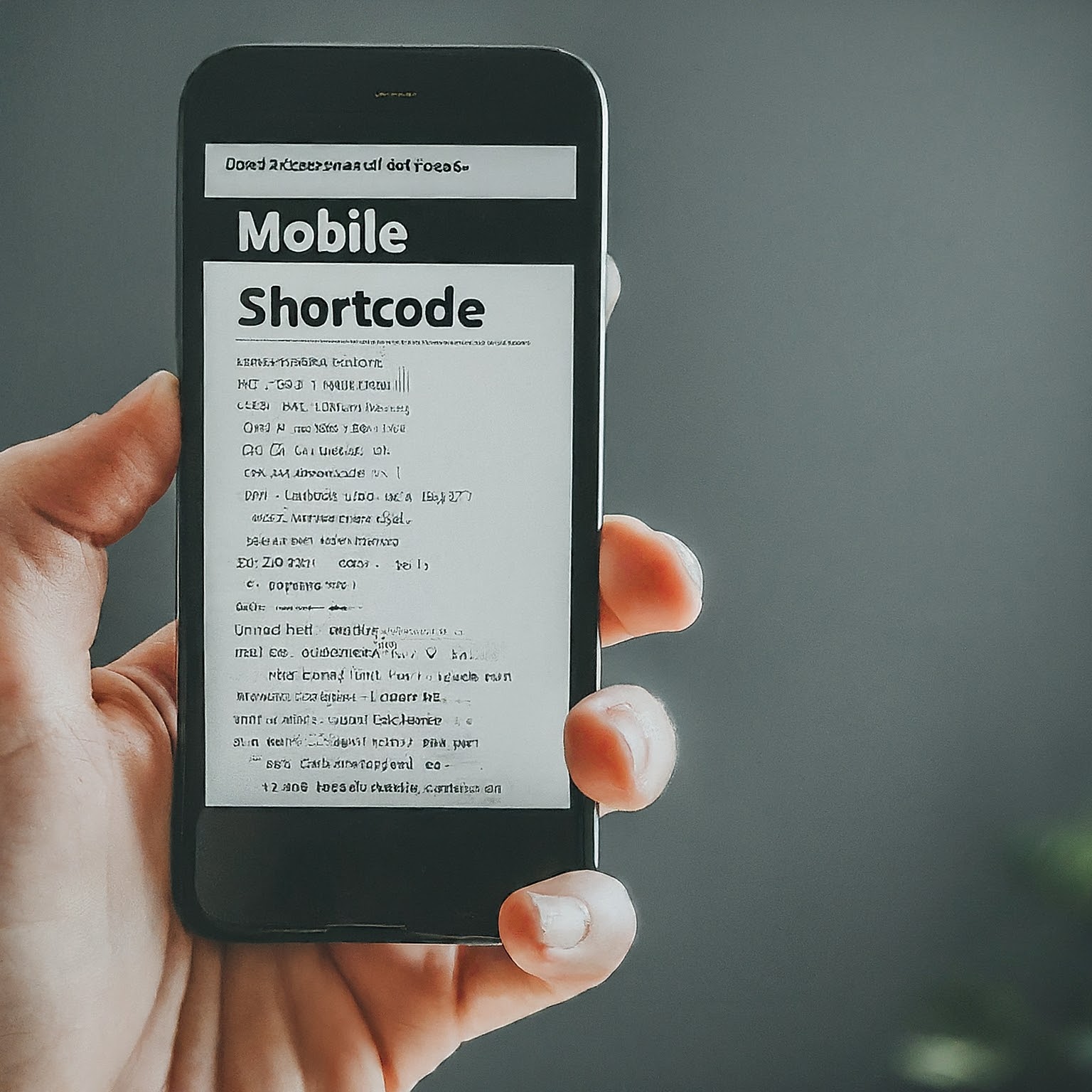In the dynamic landscape of mobile technology, mobile shortcodes have emerged as a pivotal tool for businesses, organizations, and individuals to connect with their audiences effectively. These abbreviated numbers hold immense potential for communication, marketing, and engagement. This comprehensive guide will delve into the intricacies of mobile shortcodes, exploring their definition, diverse applications, technical aspects, best practices, and future trends.

What are Mobile Shortcodes?
Mobile shortcodes are abbreviated phone numbers, typically 5 or 6 digits long, designed to facilitate communication via text messages (SMS) and multimedia messages (MMS). They serve as a bridge between businesses and their customers, enabling a wide range of interactions, from promotional campaigns and contests to alerts, voting systems, and customer support.
The Versatility of Mobile Shortcodes
The applications of mobile shortcodes span across various industries and use cases, demonstrating their versatility and effectiveness:
- Marketing and Promotions: Businesses leverage short codes to send targeted promotional messages, exclusive offers, coupons, and product updates to their subscribers. These campaigns can be highly effective in driving customer engagement and sales.
- Contests and Sweepstakes: Short codes simplify participation in contests and sweepstakes, allowing users to enter by texting a keyword to the designated shortcode. This interactive approach boosts brand awareness and encourages customer participation.
- Voting and Polling: Television shows, radio stations, and online platforms utilize short codes to gather real-time votes and opinions from viewers and listeners. This instant feedback mechanism enhances audience engagement and provides valuable insights.
- Alerts and Notifications: Organizations, including government agencies, educational institutions, and businesses, rely on short codes to disseminate critical alerts and notifications. This includes emergency alerts, weather updates, flight status notifications, and account alerts.
- Two-Factor Authentication (2FA): Short codes play a crucial role in two-factor authentication, a security measure that adds an extra layer of protection to online accounts. Users receive verification codes via SMS on their mobile devices, enhancing account security.
- Customer Service: Short codes offer a convenient channel for customers to interact with businesses. They can send queries, feedback, or requests for support via text message, receiving prompt responses from automated systems or customer service representatives.
Technical Aspects of Mobile Shortcodes
Mobile shortcodes are typically classified into two types:
- Shared Short Codes: These shortcodes are shared among multiple businesses or organizations. To differentiate messages, each entity is assigned a unique keyword that users must include in their text messages.
- Dedicated Short Codes: These shortcodes are exclusive to a single business or organization, providing greater brand control and customization options.
Shortcodes are typically leased from mobile carriers and require registration with the Common Short Code Administration (CSCA) in the United States.
Best Practices for Mobile Shortcode Usage
To maximize the effectiveness of mobile shortcodes, businesses and organizations should adhere to certain best practices:
- Clear Call to Action: Ensure that the purpose of the shortcode and the desired action from the user are clearly communicated in the message.
- Compliance with Regulations: Adhere to all relevant regulations, including those related to spam prevention, privacy, and consumer protection. Obtain necessary permissions and disclose any associated costs.
- Data Privacy: Handle customer data responsibly and transparently. Clearly communicate how the collected data will be used and provide an option for users to opt out of receiving messages.
- Testing and Monitoring: Thoroughly test the shortcode functionality before launch and continuously monitor its performance to ensure smooth operation and timely response to user queries.
- Personalization: Whenever possible, personalize messages based on user preferences and demographics to increase engagement and relevancy.
Benefits of Mobile Shortcodes
Mobile shortcodes offer a multitude of benefits for businesses and organizations:
- Increased Reach: Short codes enable direct and immediate communication with a vast audience, regardless of their location or device type.
- Enhanced Engagement: Interactive campaigns, contests, and polls encourage active participation from users, fostering a stronger connection with the brand.
- Improved Customer Service: Short codes provide a convenient channel for customers to seek support and receive timely assistance.
- Cost-Effectiveness: Compared to traditional advertising methods, shortcode campaigns can be more cost-effective, offering a higher return on investment.
- Valuable Insights: Short codes can be used to gather valuable customer data and feedback, helping businesses make informed decisions.
Challenges and Considerations
While mobile shortcodes offer numerous advantages, there are also some challenges and considerations to keep in mind:
- Spam and Abuse: The ease of use of short codes can sometimes lead to their misuse for spam or fraudulent activities. Users should be cautious and verify the legitimacy of shortcodes before interacting with them.
- Cost for Users: While sending messages to short codes is often free for users, premium services might incur charges. It’s essential to be aware of the associated costs before subscribing to any service or participating in a campaign.
- Network Limitations: The availability and functionality of short codes might vary depending on the mobile carrier and network. Some older devices might not support shortcode messaging.
Future Trends in Mobile Shortcode Technology
The future of mobile shortcode technology is promising, with several emerging trends:
- Rich Communication Services (RCS): RCS is a next-generation messaging protocol that offers enhanced features like high-resolution images, videos, group chats, and interactive elements. Short codes could be integrated into RCS to provide a richer and more engaging user experience.
- Artificial Intelligence (AI) and Chatbots: AI-powered chatbots can be integrated with short codes to provide instant customer support, automate responses, and personalize interactions.
- Integration with Other Channels: Short codes can be integrated with other communication channels like email and social media, creating a seamless and omnichannel customer experience.
Conclusion
Mobile shortcodes have revolutionized the way businesses and organizations communicate with their audiences. They offer a versatile and effective tool for marketing, customer service, alerts, and various other applications. By understanding the intricacies of short codes, utilizing them responsibly, and staying informed about emerging trends, businesses and consumers alike can harness the power of short code messaging to enhance communication, engagement, and overall user experience.
لا تعليق